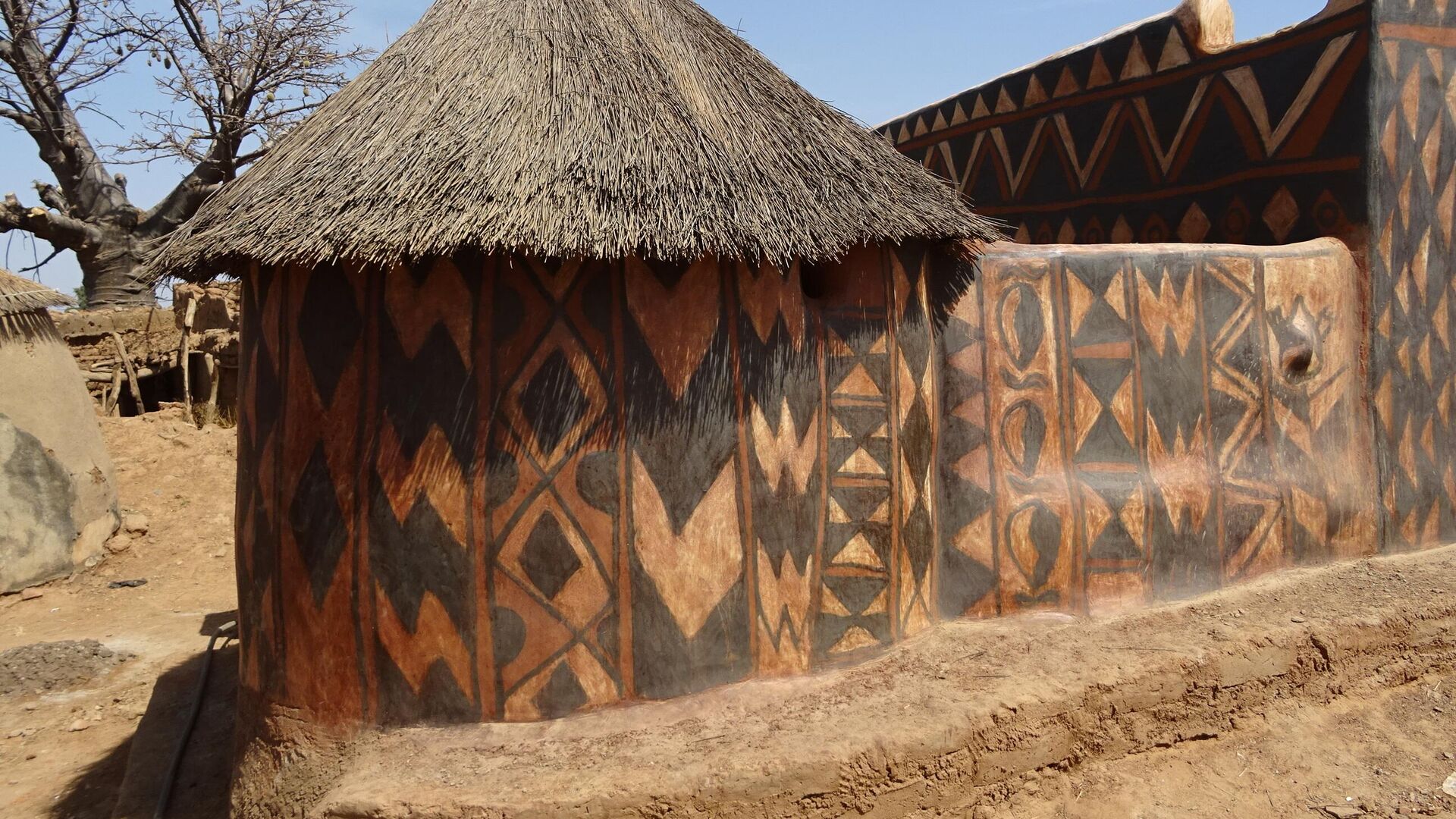https://en.sputniknews.africa/20240729/unesco-adds-five-new-african-sites-to-world-heritage-list-1067669401.html
UNESCO Adds Five New African Sites to World Heritage List
UNESCO Adds Five New African Sites to World Heritage List
Sputnik Africa
The UNESCO World Heritage List is a catalog of cultural, natural, and mixed properties of outstanding universal value, recognized and protected for their... 29.07.2024, Sputnik Africa
2024-07-29T18:28+0200
2024-07-29T18:28+0200
2024-07-29T18:41+0200
unesco
nelson mandela
ethiopia
south africa
senegal
burkina faso
kenya
southern africa
east africa
culture
https://cdn1.img.sputniknews.africa/img/07e8/07/1d/1067671598_0:243:2592:1701_1920x0_80_0_0_88c19ee5d456c3514237d7102e9231c6.jpg
The United Nations Educational, Scientific, and Cultural Organization (UNESCO) has included five new African sites on the World Heritage List. Sputnik Africa has collected key information about the "newcomers."Melka Kunture and Balchit in EthiopiaLocated in the Upper Awash Valley in Ethiopia, the site consists of prehistoric areas that preserve archaeological and paleontological records, including hominin footprints from two million years ago. Situated at 2,000 to 2,200 meters above sea level, it contains fossils of Homo erectus, Homo heidelbergensis, and archaic Homo sapiens, along with various volcanic rock tools. The cultural sequence includes the Oldowan, Acheulean, Middle Stone Age, and Late Stone Age phases.Furthermore, volcanic and sedimentary deposits with fossil fauna and flora have preserved fragments of ancient landscapes, helping reconstruct the high-altitude ecosystem of the Ethiopian Highlands during the Pleistocene and providing insights into hominin adaptation to high-altitude climates.The Royal Court of Tiebele in Burkina FasoIt is a historic earthen architectural complex established in the 16th century, showcasing the social structure and cultural values of the Kasena people. Enclosed by a protective wall, the court includes buildings arranged in sections separated by walls and paths leading to ceremonial and gathering spots outside. The men construct the huts, which are then decorated with symbolic designs by the women. These women are the sole keepers of this artistic tradition, ensuring it continues through generations.The Historic Town and Archaeological Site of Gedi in KenyaThe abandoned city of Gedi, located away from the shore and surrounded by a coastal forest, was a key Swahili city on East Africa's coast from the 10th to the 17th centuries. During this time, Gedi was involved in a complex international trade and cultural network across the Indian Ocean, connecting African coastal areas with Persia and other regions. The city, enclosed by walls, boasts the remains of homes, religious buildings, public structures, and an advanced water system. It showcases typical Swahili architecture and town planning, using materials like coral stones, coral and earth mortar, and wood.The Pleistocene Occupation Sites of South AfricaThis group of archaeological sites helps us understand the origins of modern human behavior, their thinking abilities, cultures, and how they survived climate change. The sites offer a detailed and well-preserved record of the evolution of modern human behavior, dating back up to 162,000 years. Evidence found includes ocher processing, engraved patterns, decorative beads and eggshells, advanced weapons, toolmaking techniques, and small stone tools, showing symbolic thinking and advanced technology.Nelson Mandela Legacy Sites in South AfricaThis collection of sites represents the South African fight for human rights, freedom, and reconciliation. It includes 14 locations across the country, all tied to South Africa's political history in the 20th century. Some key sites are the Union Buildings in Pretoria, the current seat of government; the Sharpeville Sites, remembering the massacre of 69 people protesting unfair Pass Laws; and The Great Place at Mqhekezweni, where Nelson Mandela lived as a young man and which symbolizes traditional leadership. These places highlight important events in the fight against apartheid, Mandela's efforts to promote understanding and forgiveness, and beliefs in non-racialism, Pan-Africanism, and ubuntu, a philosophy that emphasizes our shared humanity.While these five sites were added, one site in Senegal was removed by UNESCO, but for a positive reason: last week, Niokolo-Koba National Park was taken off the List of World Heritage in Danger. This happened after Senegal showed significant progress in addressing threats to the park's biodiversity, according to the organization.
ethiopia
south africa
senegal
burkina faso
kenya
southern africa
east africa
west africa
Sputnik Africa
feedback@sputniknews.com
+74956456601
MIA „Rossiya Segodnya“
2024
Christina Glazkova
https://cdn1.img.sputniknews.africa/img/07e7/0b/07/1063380906_0:0:673:674_100x100_80_0_0_79628b4d0cd9f29291a57aa13bbf9e7a.jpg
Christina Glazkova
https://cdn1.img.sputniknews.africa/img/07e7/0b/07/1063380906_0:0:673:674_100x100_80_0_0_79628b4d0cd9f29291a57aa13bbf9e7a.jpg
News
en_EN
Sputnik Africa
feedback@sputniknews.com
+74956456601
MIA „Rossiya Segodnya“
Sputnik Africa
feedback@sputniknews.com
+74956456601
MIA „Rossiya Segodnya“
Christina Glazkova
https://cdn1.img.sputniknews.africa/img/07e7/0b/07/1063380906_0:0:673:674_100x100_80_0_0_79628b4d0cd9f29291a57aa13bbf9e7a.jpg
unesco, nelson mandela, ethiopia, south africa, senegal, burkina faso, kenya, southern africa, east africa, culture, west africa, archeology
unesco, nelson mandela, ethiopia, south africa, senegal, burkina faso, kenya, southern africa, east africa, culture, west africa, archeology
UNESCO Adds Five New African Sites to World Heritage List
18:28 29.07.2024 (Updated: 18:41 29.07.2024) Christina Glazkova
Writer / Editor
The UNESCO World Heritage List is a catalog of cultural, natural, and mixed properties of outstanding universal value, recognized and protected for their historical, aesthetic, scientific, or environmental significance. These sites are designated by UNESCO and aim to preserve and promote the world's shared heritage.
The United Nations Educational, Scientific, and Cultural Organization (UNESCO) has
included five new African sites on the World Heritage List.
Sputnik Africa has collected key information about the "newcomers."
Melka Kunture and Balchit in Ethiopia
Located in the Upper Awash Valley in Ethiopia, the site consists of
prehistoric areas that preserve archaeological and paleontological records, including hominin footprints from two million years ago. Situated at 2,000 to 2,200 meters above sea level, it contains fossils of Homo erectus, Homo heidelbergensis, and archaic Homo sapiens, along with various volcanic rock tools. The cultural sequence includes the Oldowan, Acheulean, Middle Stone Age, and Late Stone Age phases.
Furthermore, volcanic and sedimentary deposits with fossil fauna and flora have preserved fragments of ancient landscapes, helping reconstruct the high-altitude ecosystem of the Ethiopian Highlands during the Pleistocene and providing insights into hominin adaptation to high-altitude climates.
The Royal Court of Tiebele in Burkina Faso
It is a historic earthen architectural complex established in the 16th century, showcasing the
social structure and cultural values of the Kasena people. Enclosed by a protective wall, the court includes buildings arranged in sections separated by walls and paths leading to ceremonial and gathering spots outside. The men construct the huts, which are then decorated with symbolic designs by the
women. These women are the
sole keepers of this artistic tradition, ensuring it continues through generations.
The Historic Town and Archaeological Site of Gedi in Kenya
The abandoned city of Gedi, located away from the shore and surrounded by a coastal forest,
was a key Swahili city on East Africa's coast from the 10th to the 17th centuries. During this time, Gedi was involved in a complex international trade and cultural network across the Indian Ocean, connecting African coastal areas with Persia and other regions. The city, enclosed by walls, boasts the remains of homes, religious buildings, public structures, and an advanced water system. It showcases typical Swahili architecture and town planning, using materials like coral stones, coral and earth mortar, and wood.
The Pleistocene Occupation Sites of South Africa
This group of archaeological sites helps us understand the origins of modern human behavior, their thinking abilities, cultures, and how they survived
climate change. The sites offer a detailed and well-preserved record of the evolution of modern human behavior, dating back up to 162,000 years. Evidence found includes ocher processing, engraved patterns, decorative beads and eggshells, advanced weapons, toolmaking techniques, and small stone tools, showing symbolic thinking and advanced technology.
Nelson Mandela Legacy Sites in South Africa
This collection of sites represents the South African fight for human rights, freedom, and reconciliation. It includes 14 locations across the country, all tied to South Africa's political history in the 20th century. Some key sites are the Union Buildings in Pretoria, the current seat of government; the Sharpeville Sites, remembering the massacre of 69 people protesting unfair Pass Laws; and The Great Place at Mqhekezweni, where
Nelson Mandela lived as a young man and which symbolizes traditional leadership. These places highlight important events in the fight against apartheid, Mandela's efforts to promote understanding and forgiveness, and beliefs in non-racialism, Pan-Africanism, and ubuntu, a philosophy that emphasizes our shared humanity.
While these five sites were added, one site in Senegal was removed by
UNESCO, but for a positive reason: last week, Niokolo-Koba National Park was
taken off the List of World Heritage
in Danger. This happened after Senegal showed significant progress in addressing threats to the park's biodiversity, according to the organization.


